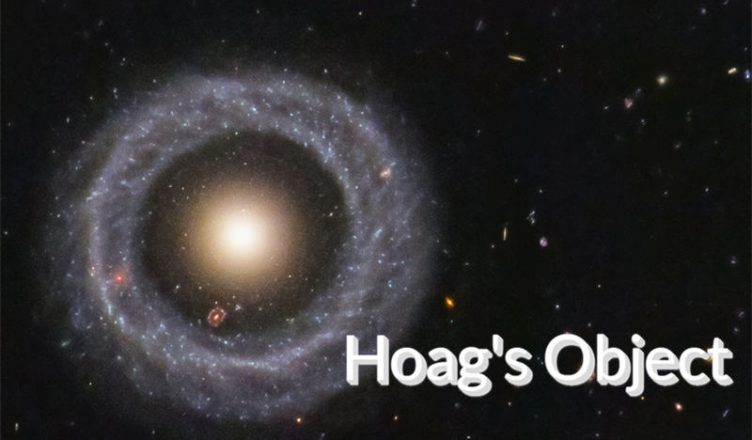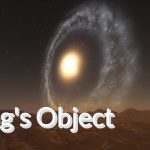Hoag’s Object is a highly renowned ring galaxy. Is it one galaxy or two? This question arose when astronomer Arthur Hoag accidentally discovered this unusual extragalactic object in 1950. It consists of a ring of bright blue stars surrounding a central spherical core primarily composed of many potentially older red stars. In between, there is an almost entirely dark gap. While similar objects have been identified and classified as ring galaxies, the formation of Hoag’s Object remains a mystery.
Hypotheses for the origin of such galaxies include galaxy collisions that occurred billions of years ago or the chaotic gravitational interactions of a galaxy nucleus with an unusual shape. This photograph, taken by the Hubble Space Telescope in July 2001, reveals unprecedented details of Hoag’s Object, which may aid astronomers in better understanding galaxies of this type. Hoag’s Object spans approximately 100,000 light-years and is located within the Serpens constellation in the northern sky, at a distance of about 600 million light-years from Earth. Interestingly, looking through the gap, you can also see another more distant ring galaxy. Here are 15 fascinating facts about Hoag’s Object:
1. Hoag’s Object – The Ring Galaxy: Hoag’s Object, also known as the Ring Galaxy, was discovered by the astronomer Arthur Hoag in 1950 by chance. Its outer ring is composed of bright blue stars, while the central sphere consists primarily of many possibly older red stars. Between the two is an almost entirely dark gap. Although similar objects have been identified and classified as ring galaxies, how Hoag’s Object formed remains a mystery to this day.”
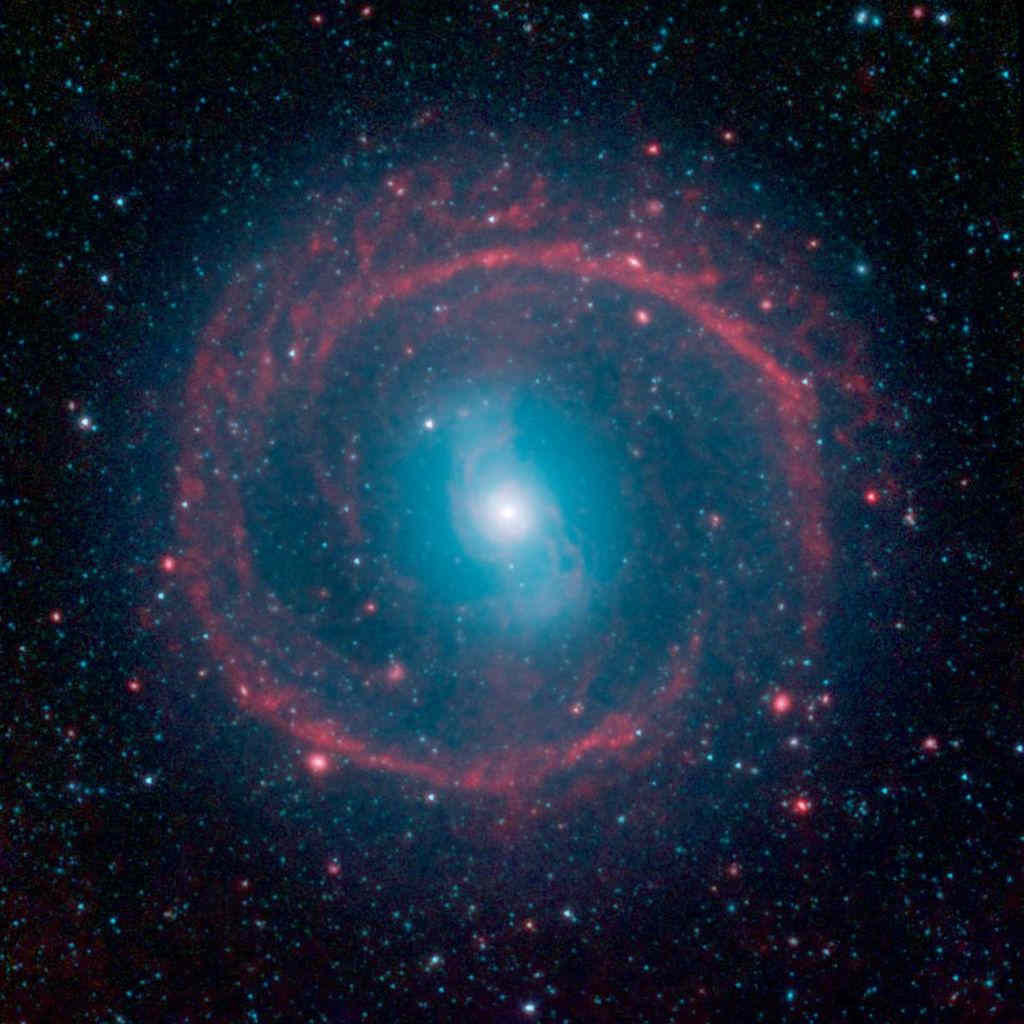
2. Unusual Galaxy: Hoag’s Object is a highly renowned ring galaxy, known for its atypical nature. Its appearance not only captivates amateur astronomers but also intrigues professional astronomers due to its extraordinary structure. This galaxy was discovered in 1950 by the astronomer Arthur Allen Hoag, who speculated that this celestial object is either a planetary nebula or a unique galaxy.
3. Discovery: This unusual extragalactic celestial object was stumbled upon by the astronomer Arthur Hoag in 1950. Its outer ring is composed of bright blue stars, while the central sphere consists primarily of many possibly older red stars. Between the two is an almost entirely dark gap. Although similar objects have been identified and classified as ring galaxies, how Hoag’s Object formed remains a mystery to this day.
4. Origin Hypotheses: Hoag’s Object is believed to have originated from a galaxy collision that occurred billions of years ago or as a result of chaotic gravitational interactions within a galaxy nucleus with an unusual shape. The image on the right, taken by the Hubble Space Telescope in July 2001, reveals unprecedented details of Hoag’s Object, potentially aiding astronomers in gaining a better understanding of such galaxies. Hoag’s Object spans approximately 100,000 light-years and is located within the Serpens constellation in the northern sky, at a distance of roughly 600 million light-years from Earth. Interestingly, when peering through the gap, another even more distant ring galaxy can be seen.
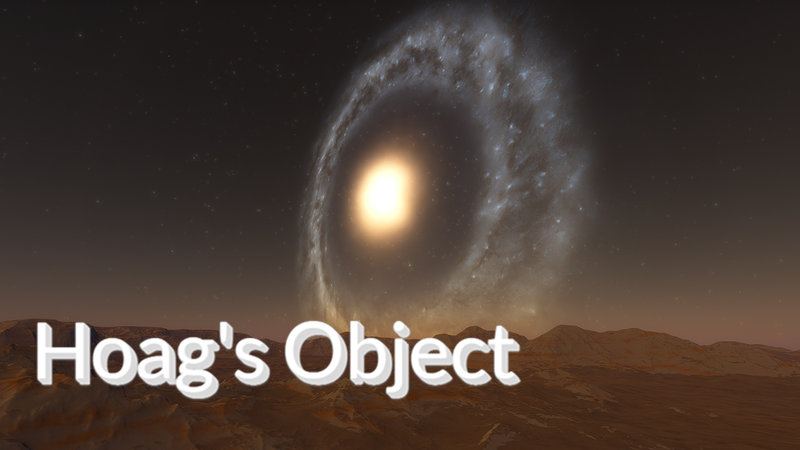
5. Research Process: Even though Hoag’s Object is clearly visible on the Palomar Sky Survey, it was not initially cataloged in the catalogs of galaxy types, galaxies and galaxy clusters, or the planetary nebulae catalog. In his initial discovery announcement, Arthur Hoag proposed the hypothesis that the visible ring was caused by gravitational lensing. However, this idea was soon abandoned because the ring and the central core had the same redshift, and more advanced telescopes revealed multiple nodal structures within the ring. Such structures would not be present if the ring were formed by gravitational lensing.
6. Location of Hoag’s Object: Many details about this galaxy remain a mystery, starting with how it formed. The so-called classic ring galaxies are formed when smaller galaxies collide with larger disk-shaped galaxies, leading to a distinctive ring-shaped density wave. However, no traces of a second galaxy, often referred to as the “bullet,” have been found, and the relative velocity of Hoag’s Object’s core to the circular ring is also low, making the hypothesis of its formation through such a collision unlikely to be valid.
7. Astronomers’ Perspectives: Noah Brosch suggests that Hoag’s Object may have been a barred spiral galaxy billions of years ago, as the bar structure can be highly unstable. Schweizer et al. (1987), on the other hand, argue that this hypothesis is unlikely unless there are other reasons, as the object’s center is spherical, whereas the core of barred spiral galaxies is disc-shaped. However, they also acknowledge some weak evidence that does not have a disputed and satisfying explanation for this unique state. Interestingly, there are several galaxies that share some of the main features of Hoag’s Object, but their cores are barred or elongated, and they also exhibit some spiral structures. Even though none of them display the symmetry seen in Hoag’s Object, these rare galaxies can still be considered as members of the Hoag-type galaxy category.
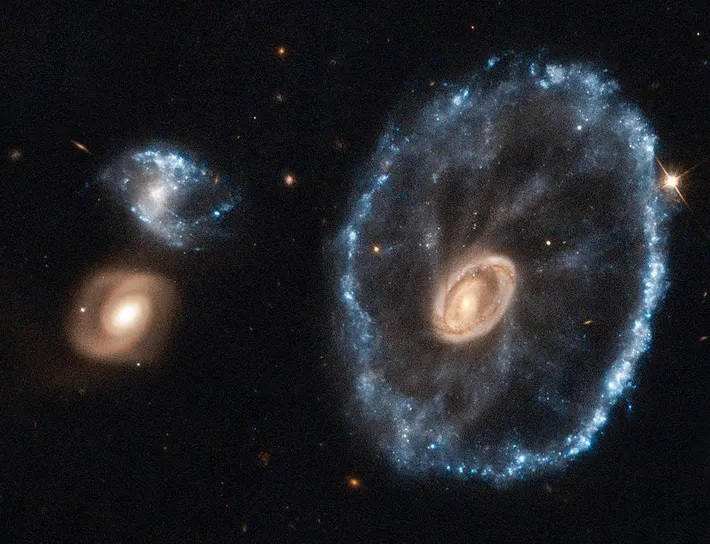
8. How Hoag’s Object Formed: The formation of Hoag’s Object still requires further explanation. It may have resulted from a series of cumulative events that led to the galaxy we observe today, such as collisions or the capture of another galaxy by a pre-existing one. Over the past 2 to 3 billion years, similar processes may have also given rise to ring galaxies.
Ring galaxies can form in several different ways. One possible scenario involves a collision with another galaxy, where the second galaxy’s velocity passes through the first, leaving behind a “striking” formation of stars. However, in the case of Hoag’s Object, there is no evidence indicating the presence of a second galaxy, leading to the suspicion that the blue ring of stars may have been torn from a nearby galaxy that passed through. Some astronomers estimate that this encounter occurred around 200 to 300 million years ago.
9. Numerous Theories: Arthur Hoag initially believed that the luminosity of the ring-shaped object, similar to planetary nebulae, was produced by a star similar to the Sun. However, he quickly discounted this possibility, suggesting that the mysterious object was more likely a galaxy. Observations in the 1970s confirmed this prediction, although many details about Hoag’s Galaxy remain enigmatic. The galaxy is located in the constellation Serpens and lies beyond 6 billion light-years away.
Among the various theories, astronomer François Schweizer favors the theory of galaxy collision. He proposes that the formation of Hoag’s Object can be traced back to approximately 3 billion years ago. Over such a long period, any remnants of a collision would have been erased. Schweizer suggests that the core of Hoag’s Object accumulated a significant amount of interstellar gas from its surroundings through its own gravitational attraction in the early stages before the ring structure formed. Excess gas then condensed into the ring structure surrounding the galaxy.
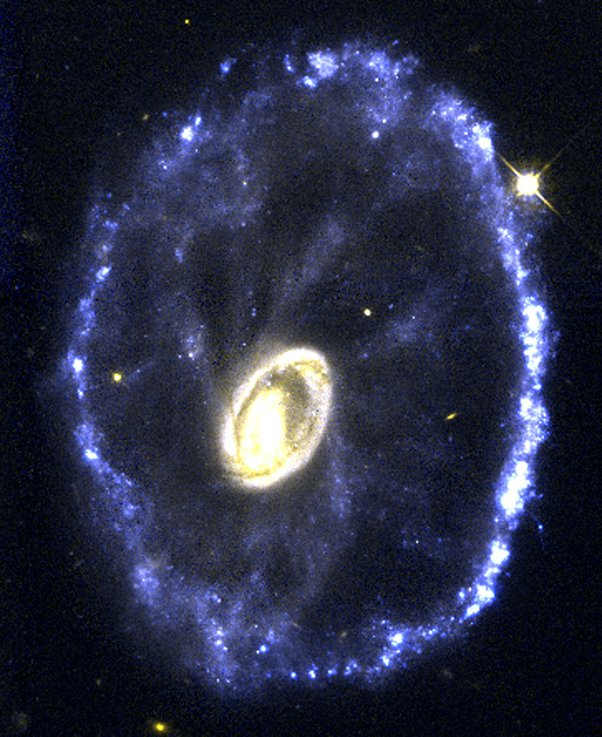
10. Arthur Hoag’s Hypothesis: In his initial announcement upon discovery, Arthur Hoag proposed the hypothesis that the visible ring was caused by gravitational lensing. However, this idea was soon abandoned because both the ring and the central core had the same redshift, and more advanced telescopes revealed multiple nodal structures within the ring. Such structures would not exist if the ring were caused by gravitational lensing, leading to the abandonment of this notion.
11. Collision-Induced Ring Wave Theory: Many details about the formation of this galaxy remain a mystery. In the case of so-called classic ring galaxies, they are formed when smaller galaxies collide with larger disk-shaped galaxies, resulting in a distinctive ring-shaped density wave. However, no traces of a second galaxy, often referred to as the “bullet,” have been found, and the relative velocity of Hoag’s Object’s core to the circular ring is also low, making the hypothesis of its formation through such a collision unlikely to be valid.
12. Barred Spiral Galaxy Theory: Noah Brosch suggests that Hoag’s Object may have been a barred spiral galaxy billions of years ago because the bar structure is highly unstable. Schweizer et al. (1987), on the other hand, argue that this hypothesis is unlikely unless there are other reasons, as the object’s center is spherical, whereas the core of barred spiral galaxies is disc-shaped. However, they also acknowledge some weak evidence that does not have a disputed and satisfying explanation for this unique state. Interestingly, there are several galaxies that share some of the main features of Hoag’s Object, but their cores are barred or elongated, and they also exhibit some spiral structures. Even though none of them display the symmetry seen in Hoag’s Object, these rare galaxies can still be considered as members of the Hoag-type galaxy category.
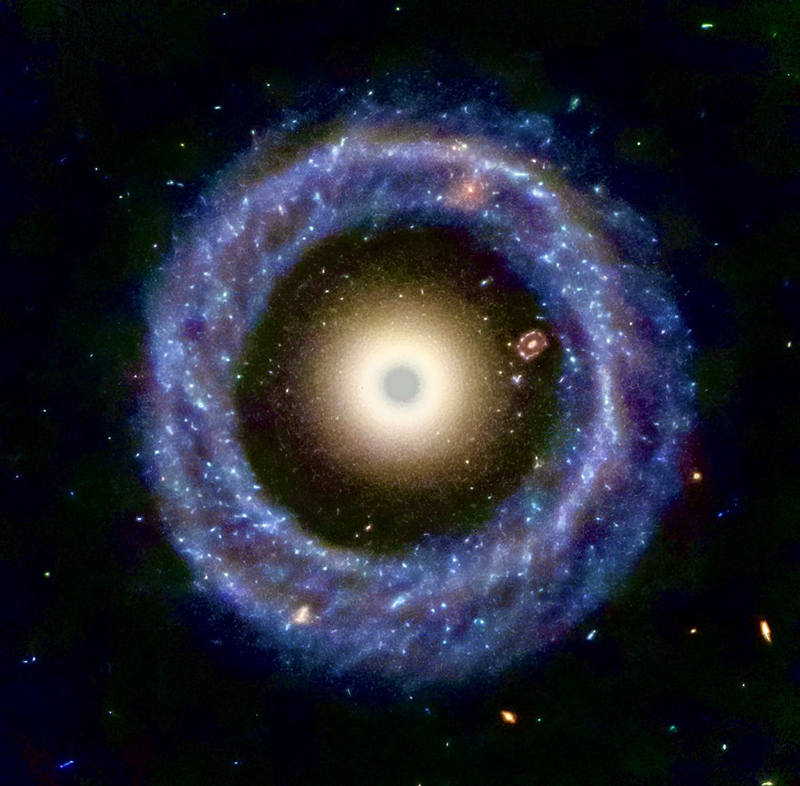
13. Polar-Ring Galaxy: There is still a need for further explanation regarding the formation of Hoag’s Object. It has been suggested that it may have resulted from a series of cumulative events, in other words, events that caused the galaxy we see today to form through collisions or capture by another galaxy. Over the past 2 or 3 billion years, similar processes may have also led to the creation of polar-ring galaxies.
14. Serpens Caput: If we were to observe through a telescope a young, blue star forming an almost perfect circular ring, and the core of this older yellow star is located within the Serpens constellation, then this ring-shaped galaxy might be Hoag’s Object. Hoag’s Object is positioned slightly larger than our Milky Way galaxy, and there are some novae in the gap that separates the two groups of stars. However, these star clusters are not visible due to their dim location. Hoag’s Object is an extremely rare type of galaxy, and in one direction within the gap between its central core and the circular ring, you can even spot a more distant galaxy where more young stars are distributed.
15. When Hoag’s Object was first discovered: Our universe, like a playground of galaxies, is filled with various shapes of galaxies, most of which have relatively common appearances, such as spherical, elliptical, or flat disk-like shapes, like the Milky Way with its characteristic barred spiral galaxy features. The spiraling patterns in galaxies can vary, showcasing the artistic elegance found in the natural world. However, Hoag’s Object stood out as exceptionally unique and bizarre. When the astronomer Arthur Hoag first discovered it, he could hardly believe it was a galaxy.
Instead, he initially thought he had stumbled upon a dying star, a celestial object known as a planetary nebula, with interstellar gas forming its outer shell. However, he was not entirely satisfied with this explanation himself and pointed out that there were no characteristic wavelength features of hot gas in the outer ring-like structure of the galaxy. He further speculated that the mysterious ring-like structure on the outskirts of the galaxy could be an optical illusion—a phenomenon we now know as the gravitational lensing effect. The basic principle behind this effect is that when light from a background galaxy encounters a strong gravitational field, the light is bent and distorted by the gravitational field.
We can determine the extent to which the light is distorted from the image of the foreground galaxy, and the greater the distortion, the stronger the gravitational field of the foreground galaxy, allowing us to infer the gravitational field of the foreground galaxy. However, such an explanation failed to account for Hoag’s Object’s peculiar characteristics.
END:
In summary, scientists have spent many years researching and speculating about the formation principles of Hoag’s Object. However, they have not yet reached a consensus. The initial hypothesis of gravitational lensing was proven incorrect, and subsequent theories involving collisions and barred spiral galaxies were also refuted. The similarity between the core and the outer redshift phenomena in Hoag’s Object suggests their interconnectedness, but the specific formation mechanism remains unknown. This unsolved puzzle underscores the presence of numerous unknowns and challenges in the field of astronomy, inspiring scientists to delve deeper into research in order to unravel more mysteries of the universe. The study of Hoag’s Object will continue to drive our understanding of the origin and evolution of the cosmos, offering the potential for further possibilities and discoveries in future astronomical research.
More UFOs and mysterious files, please check out our YouTube channel: MysFiles
Andromedans Encounters: Reveal the history of humanity
